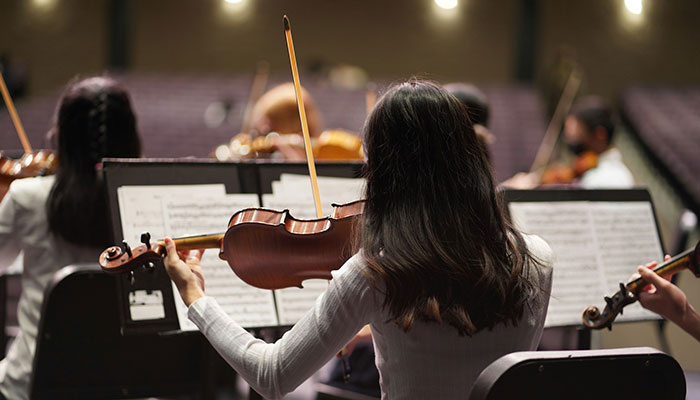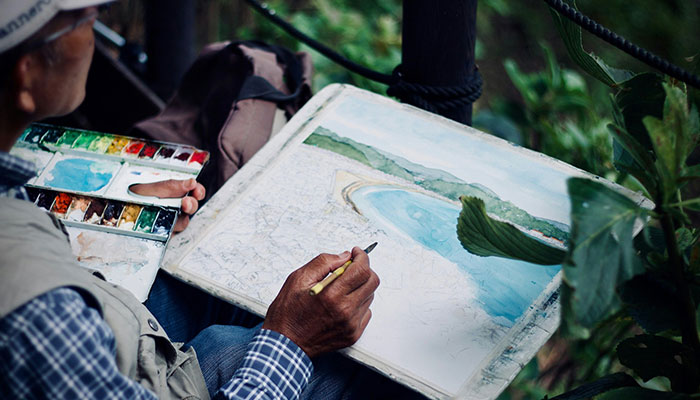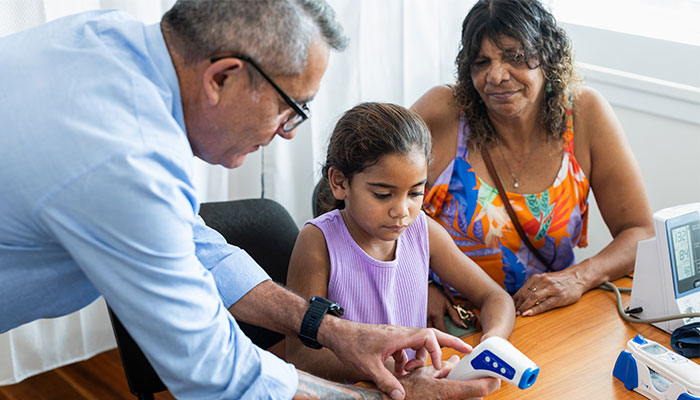AUSTRALIAN artists are relying on unrelated pursuits to make a living, with the country’s creative community reporting that only 42 per cent of their salary is generated by artistic endeavours.

Artists in Australia earned an average gross income of $54,500 during the 2021/22 financial year, comprising $23,200 in creative income, $15,300 in arts-related income and $16,000 in non-arts income.
The figures were revealed today in Artists As Workers: An Economic Study of Professional Artists in Australia, co-authored by Distinguished Professor David Throsby and Katya Petetskaya from Macquarie Business School.
Funded by Creative Australia, the report illustrates a pattern of artists being forced away from their creative calling to make ends meet.
Professor Throsby explains: “Creative income is generated by original creative work, while arts-related work covers mainly teaching, such as a musician giving private lessons or an artist teaching in a school or taking a job as a gallery curator or guide.
“The third category is work removed from artistic endeavours altogether, such as a role as a taxi driver or waiter, and is required because a lack of available work or return means they must earn an income doing other things.
“The income distribution is heavily skewed towards the lower end, with data indicating just under half of artists make less than $10,000 per year on average from creative work, and around 16 per cent make less than $10,000 in total.”
Income not equal to expertise
This seventh edition of the survey, first undertaken in 1983, captured data from 637 artists. The participants were selected because they were “dedicated, practising professionals … currently working in their chosen profession”, and were surveyed on topics such as income and financial security, wellbeing and work patterns.
... the fact is artists don’t get paid anything like what is commensurate with their contribution to society.
The questions were expanded to consider the pandemic and its impact.
Professor Throsby notes that, despite the impact of COVID-19 on this group, the income situation of artists hasn’t changed much since the previous survey, published in 2016.
“Income has recovered to some extent, but the fact is artists don’t get paid anything like what is commensurate with their contribution to society,” Professor Throsby says.
“This community comprises highly educated professionals, people with long experience in their profession. If you compare this income with professionals in managerial roles, with similar years of education and experience, it is clear artists are not receiving proper reward.
“Money isn’t an indication of success in this community, and artists take an income hit because of the satisfaction they get from working at something contributing to culture.”
Post COVID-19 landscape
Professor Throsby says respondents were quizzed about their return to pre-COVID conditions, with one-third indicating they had yet to resume pre-pandemic hours.

“The numbers vary a little bit by art form, but that translates as a significant hit to Australian culture,’’ he says.
“It may be that older artists have been replaced by younger artists, not so impacted by the pandemic, because the report has shown the number of artists in our community hasn’t changed much over the years and is still sitting at slightly less than 50,000 practising artists.
“The strong growth observed between 1987 and 2001 has slowed since, and we’ve established the number of craft practitioners has declined, but this is offset by an increase in the number of dancers and actors.”
Data driving change
Professional organisations, including the Australian Society of Authors, Australian Writers Guild, National Association for the Visual Arts and the Media, Entertainment and Arts Alliance will focus on the report findings that most impact their members as they lobby for change.
Inadequate income, the gender pay gap, accessibility and diversity were some of the big issues facing this community. Professor Throsby anticipated statistics in the new Artists As Workers report would be instrumental in informing the Australian government's implementation of the National Cultural Policy Review, released in January 2023.

David Throsby, pictured above, is a Distinguished Professor in the Macquarie Business School Department of Economics, and is internationally known for his research and many publications on the economics of art and culture.
Webinars for further discussion
David Throsby and Katya Petetskaya will be co-hosting two webinars with Georgie McClean from Creative Australia.
Tuesday 7 May, 2pm
Registration link: https://creative-gov-au.zoom.us/webinar/register/WN_Mp-cnTYZQNaewcwaapx1oQ#/registration
Thursday 16 May, 2pm
Registration link: https://creative-gov-au.zoom.us/webinar/register/WN_HO0ll5g1RqmYjw3EWOCUaQ#/registration



